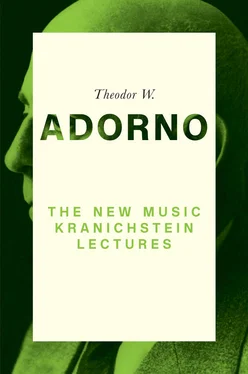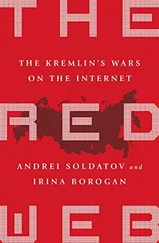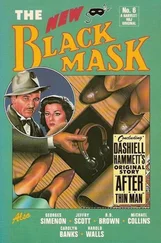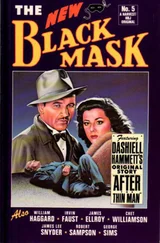Incidentally, I would also like to address another matter. Now, one can say that every composer really has a limited number of basic characters. When my friend René Leibowitz said earlier that one can judge the quality of a composer by the number, by the abundance of characters, this is certainly true in one sense, for the composer’s breadth is determined by how little the characters are repeated. At the same time, all of them have a form of – how shall I put it? – basic thematic experiences or basic thematic situations that keep returning. So, just as this shock gesture I showed you and this chord form such basic situations, this song I will play you now also displays a type that keeps returning in Schoenberg, for example in op. 6, but also in the song about the beautiful flowerbed from the George songs. 24It starts and continues as this slow alla breve song, but its fabric becomes ever freer and ever more uncompromising. And it is also the case that the question of characters must be considered not only extensively but also intensively. That is, the quality of a composer also has something to do with their ability to present these characters increasingly vividly and, most importantly, more precisely throughout their personal development. So this character that you will now hear, this is also one of Schoenberg’s basic characters; it is part of the bedrock that he then modified to an extreme degree. You will not find that immediately, you will not find the song returning in the same form; but you will notice that this idea does return in a sense, and that he varies it.
It would be very interesting – and this is a task I have entirely neglected until now, and that should really be undertaken by someone else, a very urgent task in my view – to compile a form of, well, inventory, in the correct sense of the word, an inventory of these genuinely Schoenbergian basic characters, and thus to gain a form of blueprint for these basic musical experiences of which this landscape consists. I hope to introduce you to several of these basic characters in the course of the lectures.
[Plays ‘Schenk mir deinen goldenen Kamm’ [Give me your golden comb], Four Songs, op. 2, no. 2]. So, you can see that it has a six-bar structure and is very clearly in F sharp minor, at times F sharp major, but the second chord already goes to B minor, then we move entirely outside the key; I won’t analyse it in detail [plays]. […] You will, I assume, have a very strong sense of F sharp major, even though he constantly employs this relationship of a third between C minor [plays] and the parallel major of F sharp minor [plays], namely A major, even though there is always a tendency towards the subdominant. But this whole inclination towards the subdominant is really a means of harmonic perspective; that is, I think it is extremely important for an understanding of Schoenbergian harmony: the subdominant and the substitute for the subdominant that he develops always have the purpose of counteracting the key and the dominant, and thus creating a certain dimension of depth in the cadence, and the key becomes so strong as a result that it must, in a sense, have the strength to subsume this opposing tendency of the subdominant within itself. I think that, just as people used to pour molten lead into the keels of ships, here this weight of the subdominant is attached to the key – ‘subdominant’ being understood in a very broad sense, as it is often the fourth, fifth, sixth subdominant – so it is only now, by lifting this weight, that the key establishes itself as a real force and truly proves itself. So you see that if the young Schoenberg, as I said before, takes the concept of tonality far more seriously than someone like Strauss, then one should understand this very much in a dynamic sense. That is, he is thinking of the key not as a mere given, as the framework within which one can indulge oneself; rather, the key, if you will, is really something problematic from the start. The key is respected as a means of formal construction, but it is not something that is simply there. It is something that must first be produced through the disposition of harmonic events, through the distribution of harmonic forces. And this production of the key, this is now connected – if you will allow me to return to the problematics of art nouveau I was discussing at the start – this is once again connected extremely closely to those art nouveau elements, because a resource such as tonality, which was already very conventional by the time of Schoenberg but was also the only means of formal construction he had left, had to be internally justified, so to speak, not simply by being applied, but by being produced through the arrangement of elements. That, I would say, is really the early Schoenberg’s theory of harmony, and one also finds some of this awareness of scale degrees in later free atonality, and one could show that something like the desire in dodecaphony for constantly fresh degrees is essentially already contained here, as this need for fresh contrasting degrees, which actually fulfil the condition for tonality, is really very much like this aversion to repetition, to mere stubbornness. So have a listen to the whole thing, listen to how the key is produced, perhaps best of all by listening to the epilogue, where the very same chord sequence appears, but now separated […]. […] Many of you will find the very chromatic nature of the passage reminiscent of Tristan . But here we can observe something that will be very characteristic of the later Schoenberg. I showed you in the previous song how he incorporates this strange, foreign suspended chord into the form by sequencing it. In this song here, op. 2, he is already no longer satisfied with the form of sequencing. This means that he no longer simply produces harmonic cohesion by repeating the same harmonic events on different degrees, as Wagner does, but rather uses constant variation. He does this chromatically, but I would say it is far more old-fashioned in a certain sense, namely in the sense of a chorale. He harmonizes as one harmonizes a chorale, whereas Wagner’s sequences really have little to do with harmonization any more, as they keep repeating harmonies on different degrees instead of creating harmonic progression and are thus ultimately static – because there is nothing new in them, whereas here there is truly something new. Let me just show you how that sounds, because I think it is one of the most important things for understanding Schoenberg. If the later Schoenberg, the mature Schoenberg, wishes for each musical event to stand entirely for itself and to be taken in its own right, not to be judged by some general schema, then this is already implicit in the early works in the fact that he does rely on something like repetition as a crutch but that, even within as small a space as these six bars, things are constantly changing [plays]. Now, this is how Wagner would continue [paraphrases in the style of Wagner], and so on. Now, I don’t mean to parody it at all, I simply want to show you how, even in so ostensibly basic a matter, something that outwardly seems as Wagnerian as this initial chromatic descent in the vocal line [plays] is, in its internal cohesion, something completely different from Wagner. Now, think of Richard Strauss, who likewise uses such non-diatonic degrees and similar things. In Strauss, they always have the character of a surprise, like the famous omelette surprise – they are always something of a surprise, but they have no power of formal construction; that is, what is entirely missing is this power of the subdominant. Strauss is essentially always a composer of the dominant, and you all know that, when the famous second-inversion chord appears in Strauss, one just thinks, ‘Well, a second-inversion chord’ – that is simply what Strauss does. Essentially, things always move upwards in Strauss. Strauss completely lacks this sense of a balance between harmonic forces, this awareness that there can only be a true harmonic progression if the upwards motion is carried by a weight, by a counterweight; instead, he always has this harmonic gesture of ascending to some heights, and this constant dominant-like action gives it a certain shallowness, harmonically speaking, that is completely absent here. And then, in Reger, everything is connected so entirely via semitones, so chromaticized, that no sense of scale degrees can come about at all. Reger really has only leading notes, and in that sense there is no tonality in Reger but, rather, countless tonalities that are pushed endlessly back and forth through these chords that glide into one another, connected by leading notes. But this approach of using chromaticism while keeping the degrees strong enough for a tonality to ensue – that is really the specifically Schoenbergian quality that matters here. And, you will see, he works chromatically at the start [plays]. […] And this is already the fully matured Schoenberg [plays], the cadence [plays]. Note – and this once again shows his incredibly sophisticated sense of form – that these constant inserted chords from the flat keys all have the meaning of a through-composed subdominant region. Now, in terms of compositional technique and other aspects, one might say that Schoenberg profits from this because he now no longer needs the conventional subdominant. That is, he can replace the standard subdominant with the dominant of VI and there can still be a convincing cadence to F sharp minor, because the subdominant was reached far more robustly via the preceding chords, but in this way he sidesteps the banality of the usual IV–V–I cadence. So I would like to show you that now [plays]. Here it already goes to the subdominant – still subdominant. And everything you had here, from here [plays], actually stands for this [plays a different cadence instead of bar 5]. But precisely this [plays only the cadence] is no longer needed, because this [plays another cadence] is much stronger – or this [plays a third example of a cadence] – it brings about the cadential function much more strongly, in the sense of an elaborated Neapolitan sixth, than could be achieved with the normal IV chord, which causes the typical cadential elements to disappear.
Читать дальше












